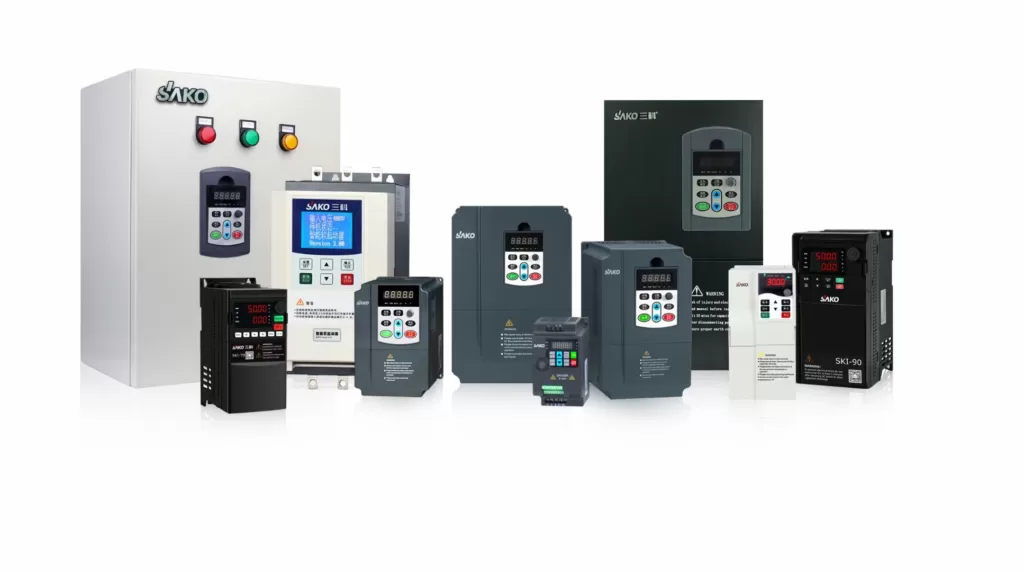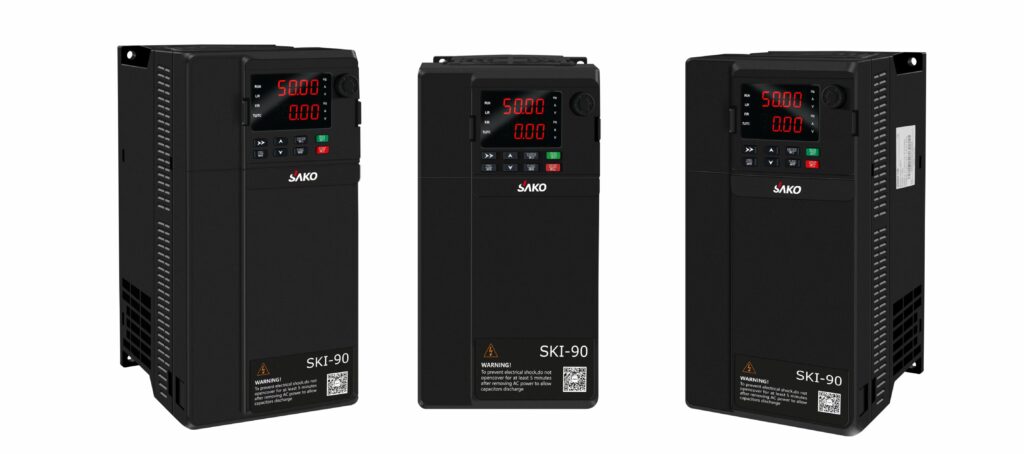Ever pondered the heartbeat of industrial applications? Yes, it’s the frequency converter. At SAKO VFD department, where I manage the foreign trade, I’ve observed firsthand how these frequency converters are indispensable in diverse sectors. Let’s explore how such a device operates.
At its core, a frequency converter unit works by adjusting the frequency of an alternating current (AC) to control the speed of an AC motor. Essentially, by altering this AC voltage, you can precisely manage the motor speed, which is often crucial in several industrial scenarios.
Intrigued? Let’s delve deeper.

What’s the Principle Behind a Frequency Converter?
The foundational principle behind a frequency converter is altering the power input to control the speed and torque of electric motors. When an AC (Alternating Current) motor operates, it draws power that is directly related to the motor’s speed. So, if you control the power’s frequency, you effectively control the motor’s speed.
Why is Motor Speed Regulation So Essential?
Consider this following example: driving a car at one frequency, meaning a motor generator sets single speed. Too slow or too fast, neither is practical. Similarly, in many industrial applications, the need for adjustable motor speed, like in an induction motor, is paramount. It could be for controlling flow in a production line or managing the synchronous speed in various equipment.
here are several reasons:
Efficiency: Different applications require different speeds for optimal performance. By controlling the motor speed, one can ensure that the motor operates at the most efficient point for a given task, the same result of reducing energy consumption and costs.
Process Precision: In many industrial and manufacturing processes, the exact speed of a motor can affect the quality of the product or process. For instance, in a production line for bottling drinks, the speed at which bottles are filled, capped, and labeled must be precise to prevent spillage, mislabeling, or other quality issues.
Safety: Running motors at inappropriate speeds can be hazardous. For instance, a conveyor belt moving too quickly can pose a risk to workers or result in damaged goods. Controlling the speed ensures safer operations.
Equipment Lifespan: Motors subjected to sudden starts or stops, or operated continuously at speeds they’re not designed for, experience greater wear and tear. By controlling the motor speed, the life of the motor and related equipment can be prolonged, reducing maintenance costs and downtimes.
Flexibility: In environments where multiple tasks are performed, having the ability to adjust motor speed provides the flexibility to cater to varied tasks without the need for multiple motors or machines.
Energy Savings: Motors that run at full speed when not necessary consume more power than those running at reduced speeds tailored to the task. By controlling the speed, significant energy savings can be achieved, leading to reduced operational costs.
Reduction in Mechanical Stress: Starting a motor at full speed can introduce mechanical stresses to the system, including belts, gears, and the motor itself. Soft starting and speed control can help mitigate these stresses.
Noise Reduction: Motors operating at full speed can generate more noise. By adjusting the speed to the necessary level, noise pollution in industrial settings can be minimized.
In summary, controlling motor speed is essential for ensuring efficiency, safety, precision, and longevity in various applications, leading to economic savings and safer working environments.
How Exactly Do Frequency Converters Manage Speed?
Frequency converters manage the speed of motors, specifically AC motors, by adjusting the frequency and voltage of the power supplied to the motor. Here’s a detailed breakdown of how they work:
Step 1: The Conversion to Direct Current The journey of power regulation begins when the frequency converter receives its initial power in the form of alternating current (AC). This power undergoes a transformation, moving through a component called a rectifier. The rectifier’s main function? To convert the sinusoidal AC waveform into a flat, continuous direct current (DC) voltage.
Step 2: Smoothing Out the Ripples Though the rectifier does an excellent job, the resulting DC power isn’t perfect and might possess minor fluctuations or ripples. Enter capacitors! These components come into play such a way to smooth out these imperfections, providing a more consistent and stable DC voltage.
Step 3: Crafting the Desired Frequency This stabilized DC power doesn’t stay in its form for long. It’s then directed through an inverter, which has a critical job: converting this DC power back to AC. However, there’s a twist! This inverter can produce AC at a different frequency than what it initially received. By modulating this output, the inverter holds the key to controlling the speed of the AC motor.
Step 4: The Role of Pulse Width Modulation Modern frequency converters don’t just stop at basic inversion. They employ a nuanced technique named pulse width modulation (PWM). In PWM, the voltage to the motor is rapidly switched on and off, crafting a synthesized sinusoidal AC waveform at the output voltage and desired frequency. By adjusting the duration and width of these pulses, both the effective voltage and the frequency supplied to the motor can be finely tuned.
Step 5: Delivering Power and Speed Control Armed with AC power at the generator and desired frequency and voltage, the frequency converter now feeds this to the motor. Given that an AC motor’s speed aligns directly with the AC power’s frequency, this adjustment of frequency becomes the masterstroke in controlling the motor’s rotational speed.
Step 6: The Feedback Mechanism Advanced frequency converters aren’t just about output; they’re also great listeners. Many are equipped with feedback systems, continually monitoring the motor’s actual performance. Should any discrepancies arise, these systems fine-tune the output, ensuring the motor operates optimally and safely.

What Role Does SAKO Play in Frequency Conversion?
Here at SAKO, our portfolio of frequency converters, especially the variable frequency drives, is renowned. Our variable frequency drive (VFD) models are supported by meticulous research, catering to myriad frequency converter applications. We’re at the forefront, ensuring industries can optimize their processes with the right power circuits, and thereby save on energy and elongate equipment lifespan.
The Benefits of Using a Frequency Converter?
Energy Efficiency: Operating motors at just the needed speed using speed control mechanisms like frequency changers can result in substantial energy savings.
Precision Process Control: Whether using a rotary converter or a solid state device, the precision is unmatched.
Equipment Longevity: Sudden equipment operations can strain winding insulation and other components. VFDs ensure smooth operation, reducing wear and tear.
Any Hiccups in Frequency Converter Work?
Of course, no device is flawless. Frequency converters, especially when operating at high frequencies, can introduce electrical noise. But with our robust power circuits and top-notch research at SAKO, we’ve minimized these issues, ensuring our units operate seamlessly.
Conclusion
So, how does a frequency converter work? By adeptly changing the frequencies of AC power to achieve precise motor speed control, it forms the backbone of countless industries. With technological advancements and the expertise of companies like SAKO, the modern frequency converter continues to evolve, driving efficiency across sectors.
